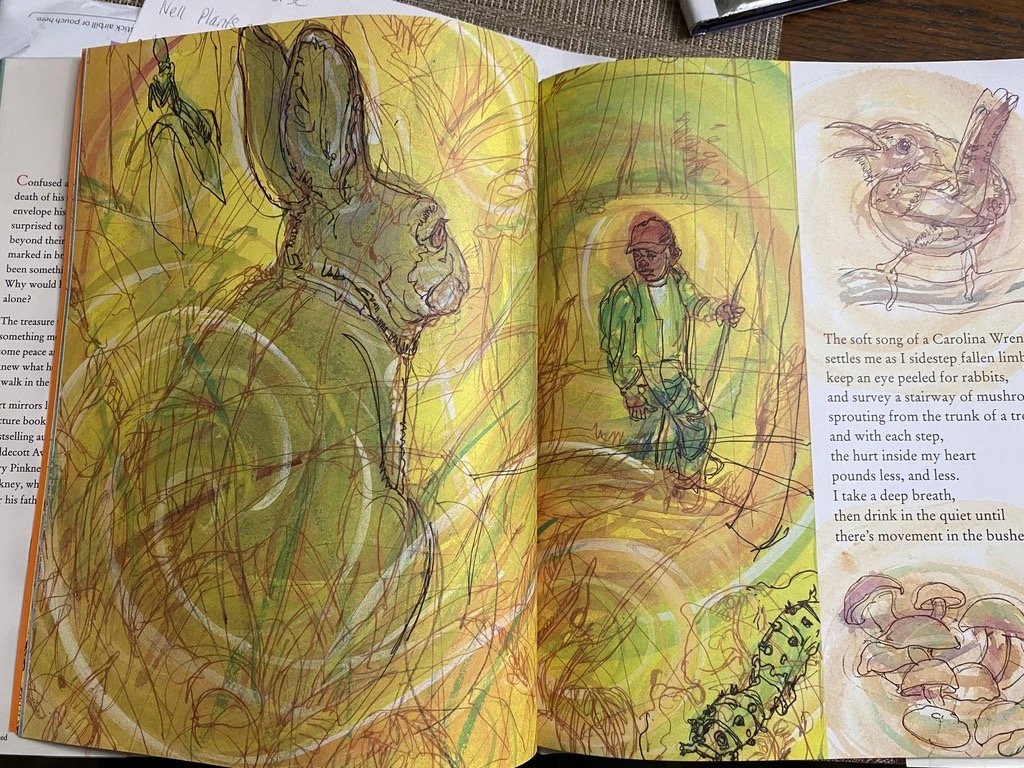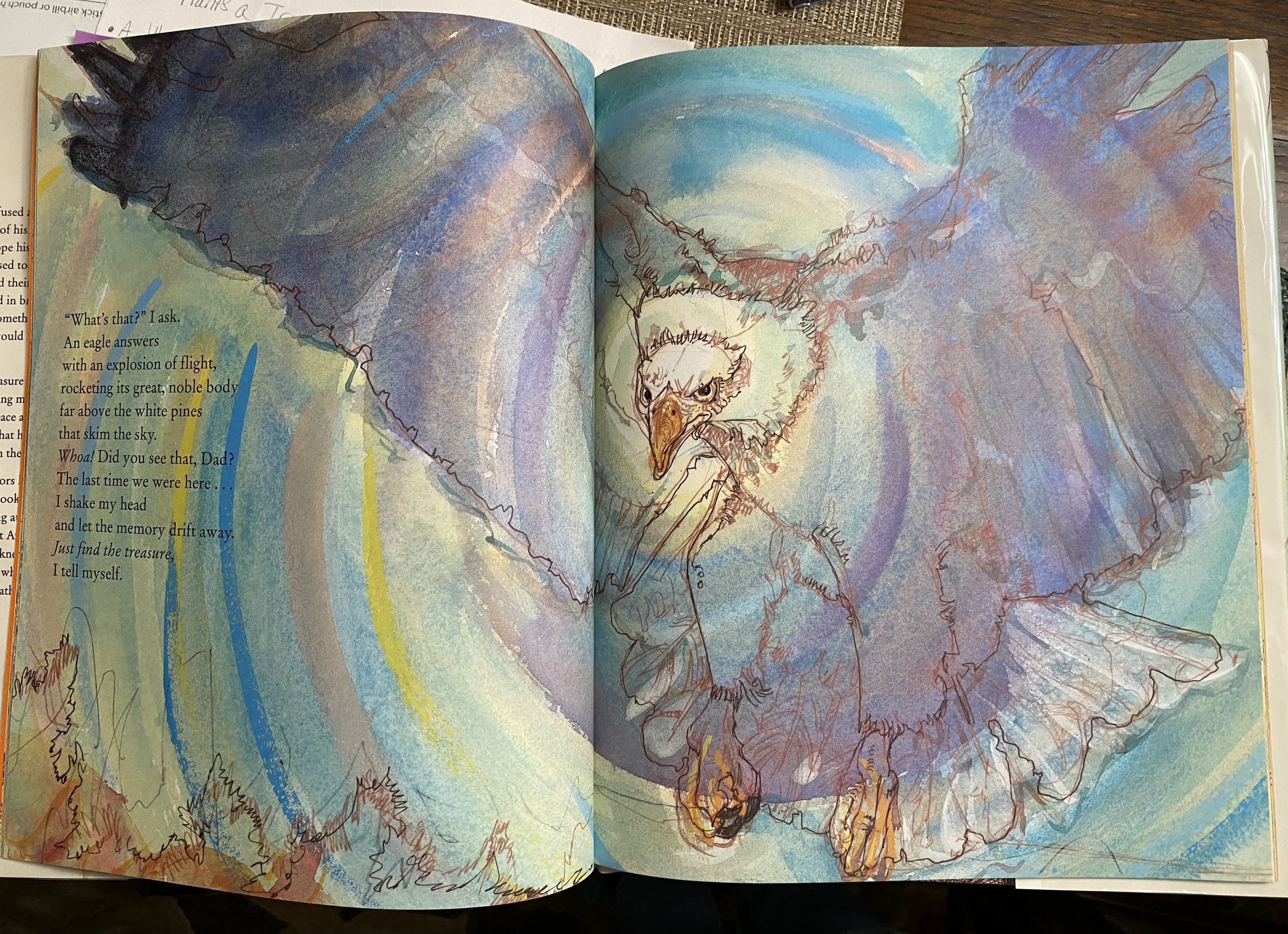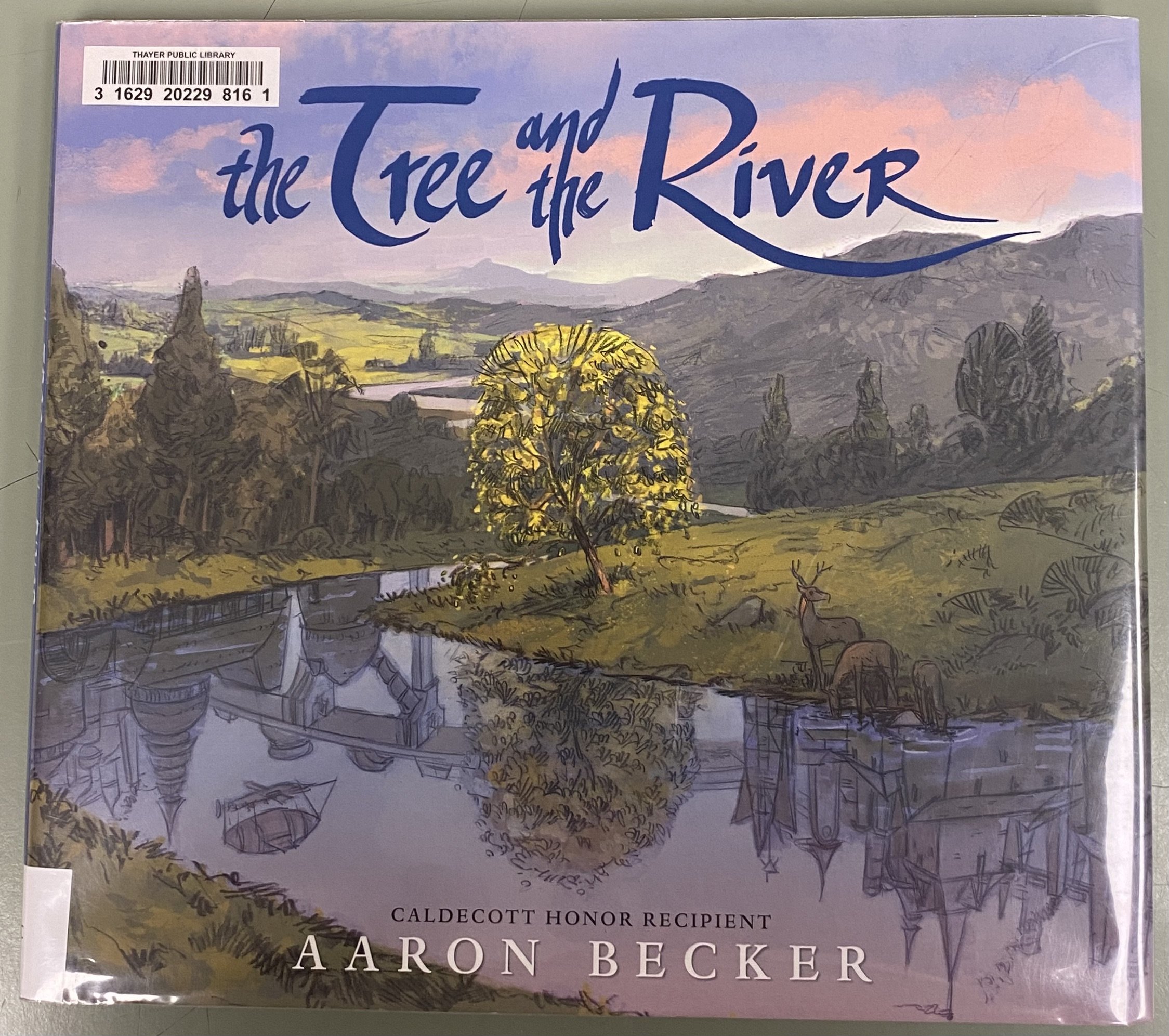In the Classroom: Art Update
January Update
For the past few weeks in Art, we have been taking a closer look at the illustrations in a number of the 2024 Caldecott Award contenders. This prestigious award will be announced on Monday, and our students are voting on their favorites in English class. Since these contenders are all picture books for children, the illustrations naturally take center stage and help to support and propel the narrative, but how do the artists’ choices of color, line, perspective and other elements of art directly impact the story?
A Walk in the Woods by Jerry and Brian Pinkney
A Walk in the Woods, illustrated by father and son Jerry and Brian Pinkney, drew sharply divided opinions! As we drilled down into the reasons why we either liked or disliked the illustrations, we learned that we all have visceral reactions to the elements and principles of art such as color, form, and composition. The following two illustrations are from the same book but they convey very different feelings. One feels very busy, scattered, bright, and hot; the other cool and focused. We talked about the symbolism of the circular or spiral motif embedded in the illustrations and whether it complimented the story or not.
Ask your student about the eerie real life parallel between the story and its illustrators. I’m not sure if it will sway the voters, but our views were very mixed on this contender!
The Tree and the River by Aaron Becker
Here is a book that shares many art elements with A Walk in the Woods but with a very different result. Most of our students liked The Tree and the River by Aaron Becker, a book with no words whose illustrations had to do all of the work. The meticulous detail in each double page spread shows the changes brought to a lone tree on the edge of a river over hundreds of years. How did the author/illustrator know what to change and what to keep the same with the advent of agriculture and industrialization? And how did he keep track of those changes? He built a clay model of the town and was able to reference it throughout the development of the story. This sequence of photos shows the steps Aaron Becker took to build each digital illustration.
We talked about how learning how to draw from direct observation helps us to see the importance of a light source and how that gives our drawings contrast, depth, and life. If this illustrator had used his imagination only, he may have overlooked unexpected areas of shadow and light that help us to connect the story to our own surroundings.
There are so many beautiful and moving stories created for young children each year and the accompanying art is truly worthy of our deeper understanding and appreciation! Ask your student which books resonated with them and why.
November Update
“Hey, you guys! The Holiday toy catalog is here!”
How many of us remember poring through that thick magazine filled with page upon page of toys and games sent directly to our house just in time for the holidays? Last Thursday during a very tired and uninspired Block 6 Art class, Katy burst into the room jubilantly waving the newly arrived toy catalog from… Amazon!
Zero response. Oh.
Maybe these kids have never seen one of these, I thought. One student picked it up and started leafing through it. She was instantly “filled with nostalgia” seeing that some of the toys she loved as a younger child were still being made. Other students chatted about toys that they had and loved playing with. One such toy was called a “Mini” from Mini Brands. I had never heard of these very realistic-looking miniature scale models of everyday items such as pizza, cereal boxes, and FedEx packages. We wondered aloud about our fascination with these tiny ordinary objects for a while and then I asked the group if they wanted to make some minis of their own. A couple of students started work right away and I began thinking about how we could display these tiny treasures. So far we have a tiny mug of root beer and a Spiderman head made from a marker cap. Someone else made a skirt out of a pencil shaving for a tiny plastic figure. I added a tiny potted plant.
As we continued working on this collaborative effort, I wondered about other artists who work in miniature and artists who celebrate and elevate the everyday object. This led me to the work of Danny Cortes, a self-taught miniature artist who makes incredibly detailed replicas of gritty ephemera and storefronts in NYC. I shared this video with students at the beginning of the next class:
Danny Cortes on pix 11 with Ben Aaron #art #dioramas #hiphopart #miniatures #nyc #artist#inspiration
So what did we learn here? This was not a lesson that was planned, it just happened. We were reminded that we need to keep our eyes and minds open, to notice, to connect with what we know and love in order to make art that is meaningful to us and that resonates with other people. Artists do not sit and wait for divine intervention and then summon their otherworldly talent to produce masterpiece after masterpiece. They get to work! They make mistakes! They fail! We will continue to notice and practice and connect as the year progresses and our students will learn how to think and behave like artists. That’s at the top of my wish list :)







